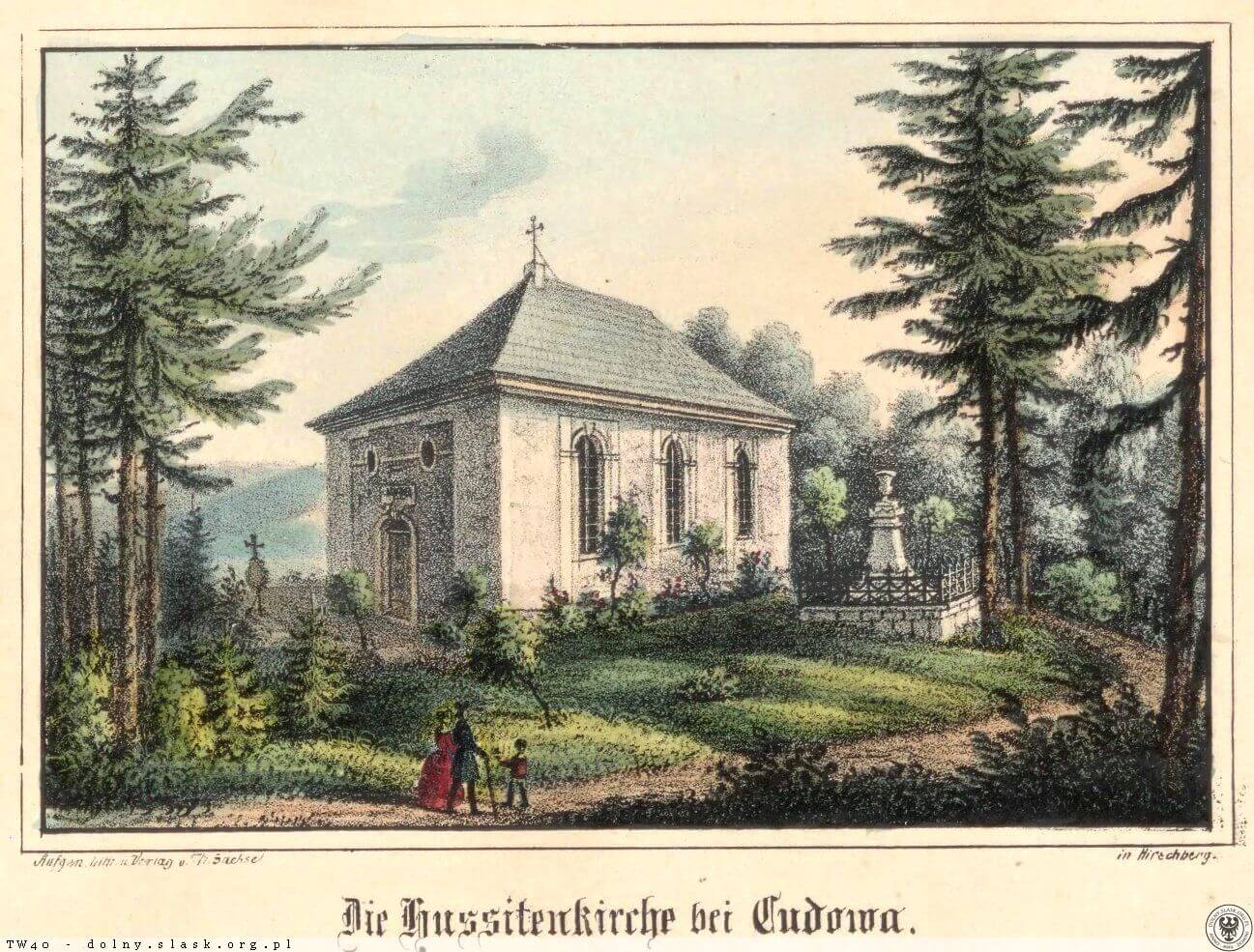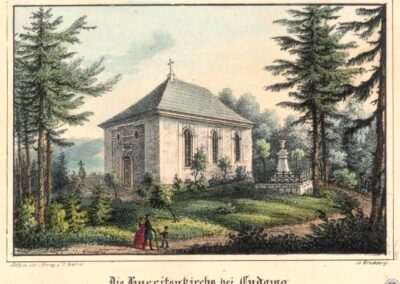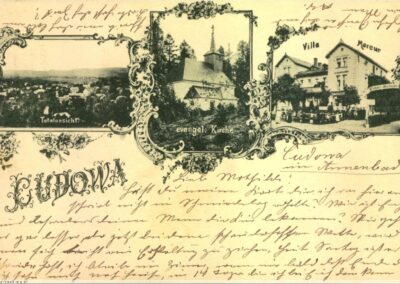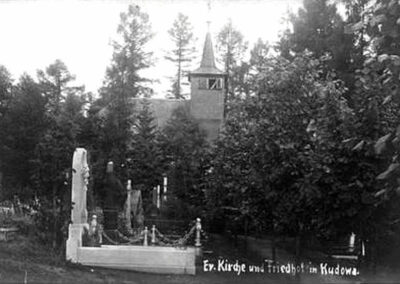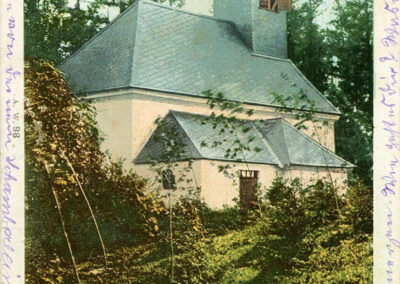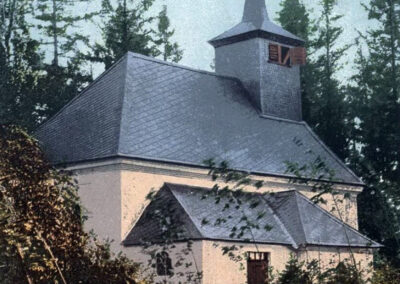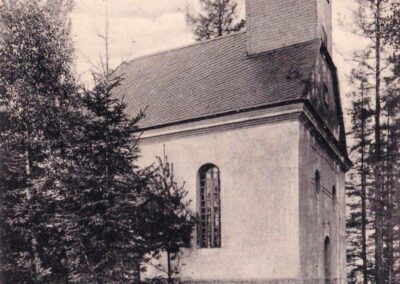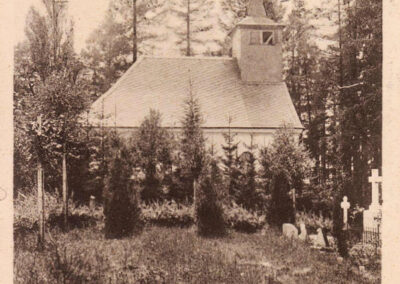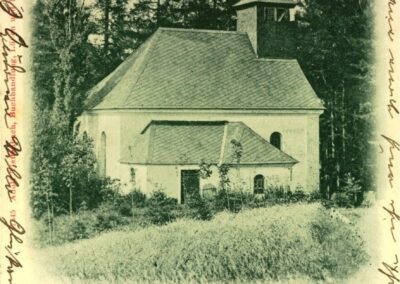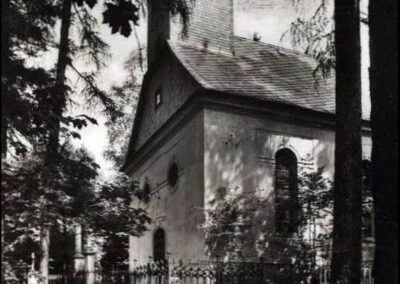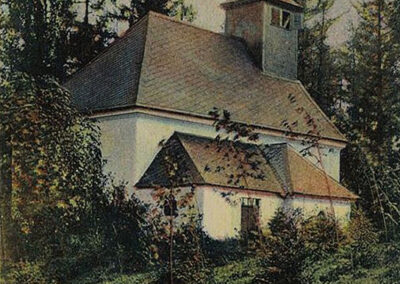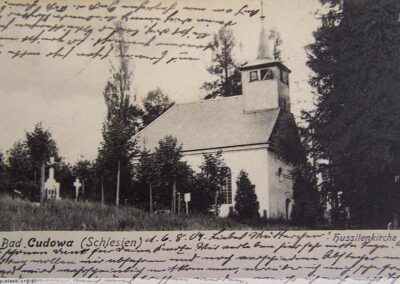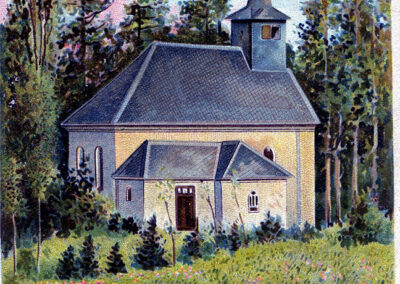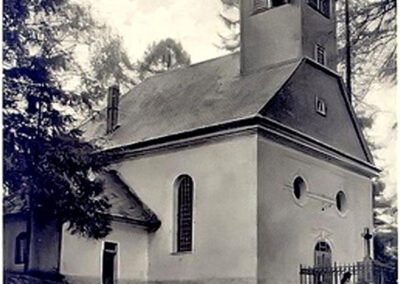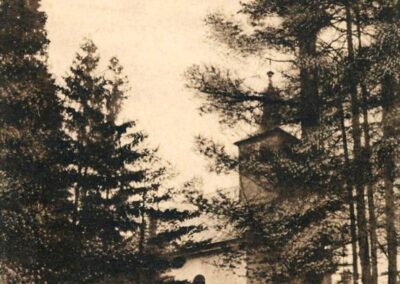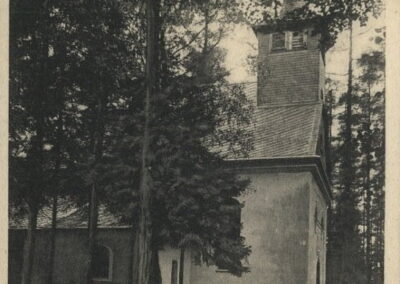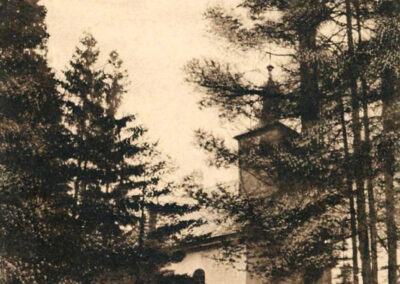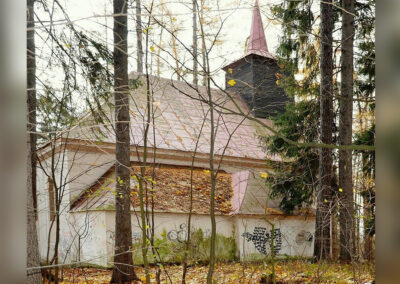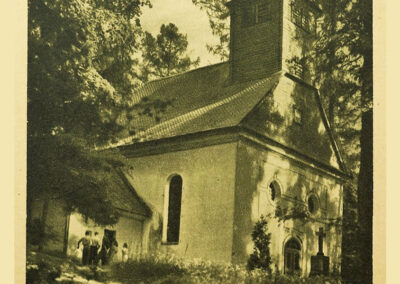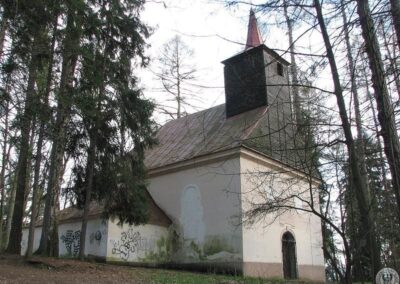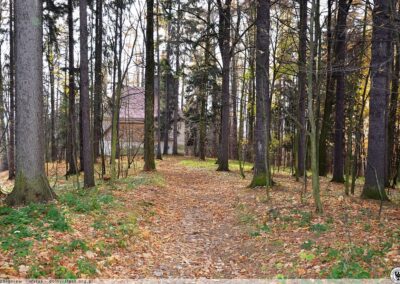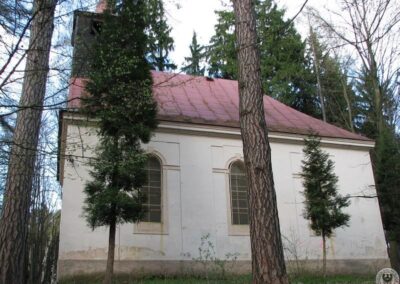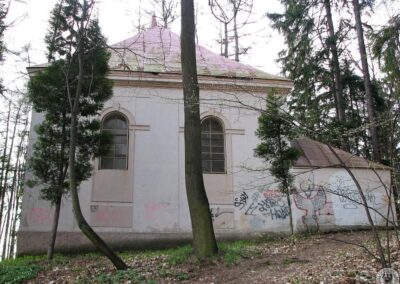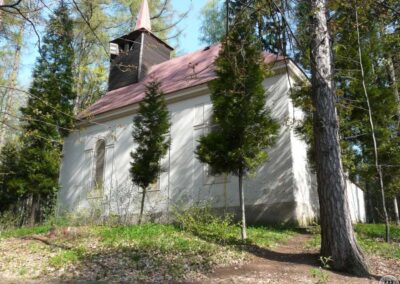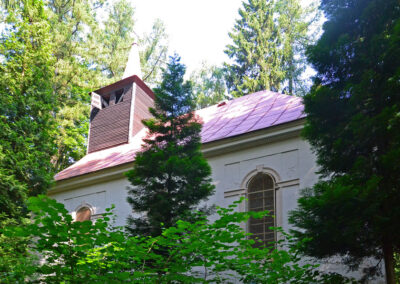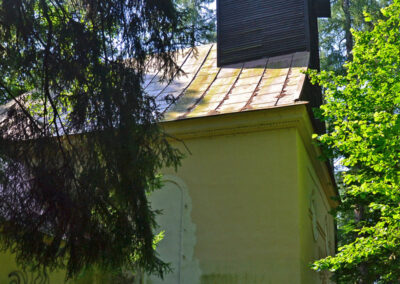The history of Ka-Plica
The building was erected in 1797-98 as an Evangelical chapel, until recently the Evangelical Augsburg Church dedicated to Christ the Lord, on Góra Parkowa (formerly Chapel Hill) from funds collected by members of the Czech Brethren commune. The construction and carpentry works were carried out by master bricklayer Georg Wagner from Radków and master carpenter Anton Stephan from Lewin.
Evangelical-Augsburg Church in Kudowa-Zdrój 1850
At the turn of the 19th and 20th centuries, the building was enlarged by a room attached to the sacristy from the east. To date, Ka-Plica has retained its original shape, interior layout and opening shapes unchanged.
The building was a branch of the Evangelical Reformed commune from Gęsiniec near Strzelin. He served local Lutherans and Calvinists at the same time. Ka-Plica is an example of late Baroque, provincial sacral architecture, characteristic of the local building tradition in the mountainous area of the Sudetes, with an artistically poor interior, which was typical of Lutheran communes.
Today, the building is a testimony to the history of evangelical construction at the end of the 18th century. As a result of the enlargement of the Spa Park below at the beginning of the 20th century and the inclusion of Parkowa Mountain within its borders, the building today constitutes an integral part of a naturalistic park complex of great importance for the landscape values of Kudowa Zdrój.
Ka-Plica, as one of the few preserved religious buildings, testifies to the religious diversity of the inhabitants of this region and is a heritage of the past, material and spiritual culture of Silesia.
The church furnishings came from later years. These were eclectic organs made by the “Schlag und Söhne” company from Świdnica (made in 1874 and 1879) and a Rococo-style altar installed in 1975, the elements of which have survived to this day.
In 1994–1995, the building was renovated and the facade repainted. Unfortunately, the building was not in use and was systematically devastated and plundered. The decision was then made to brick up some of the windows and install an alarm, which effectively protected the building from further degradation.
To this day, in Ka-Plica there is a beautiful baroque baptismal font, a metal chandelier with fifteen light points, numerical boards for reading psalms and some wooden furniture.
The wooden windows were probably replaced in the 1980s. The windows are reinforced with additional grids on the outside.
During the last renovation of the roof, the natural gray slate was removed and replaced with strips of galvanized sheet metal (later painted brown, which did not add to the beauty of the building’s roof). One bell in the tower survived. It is not certain whether there was another one but it was stolen.
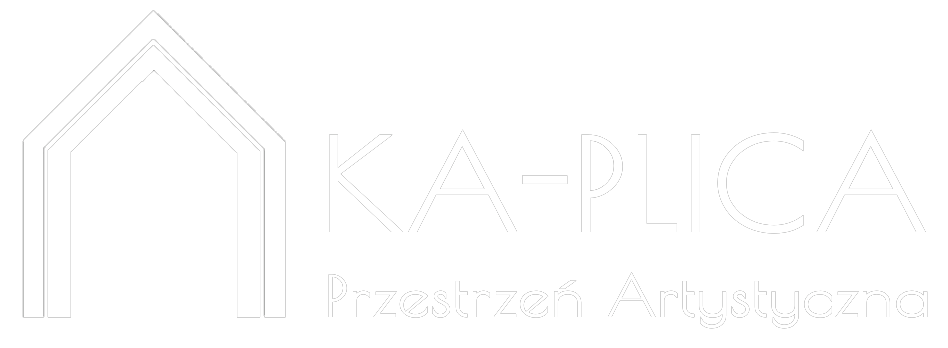
Ka-Plica Art Space
St. Stanisława Moniuszki 6
57-350 Kudowa-Zdrój
Poland
St. Stanisława Moniuszki 6
57-350 Kudowa-Zdrój
Poland

